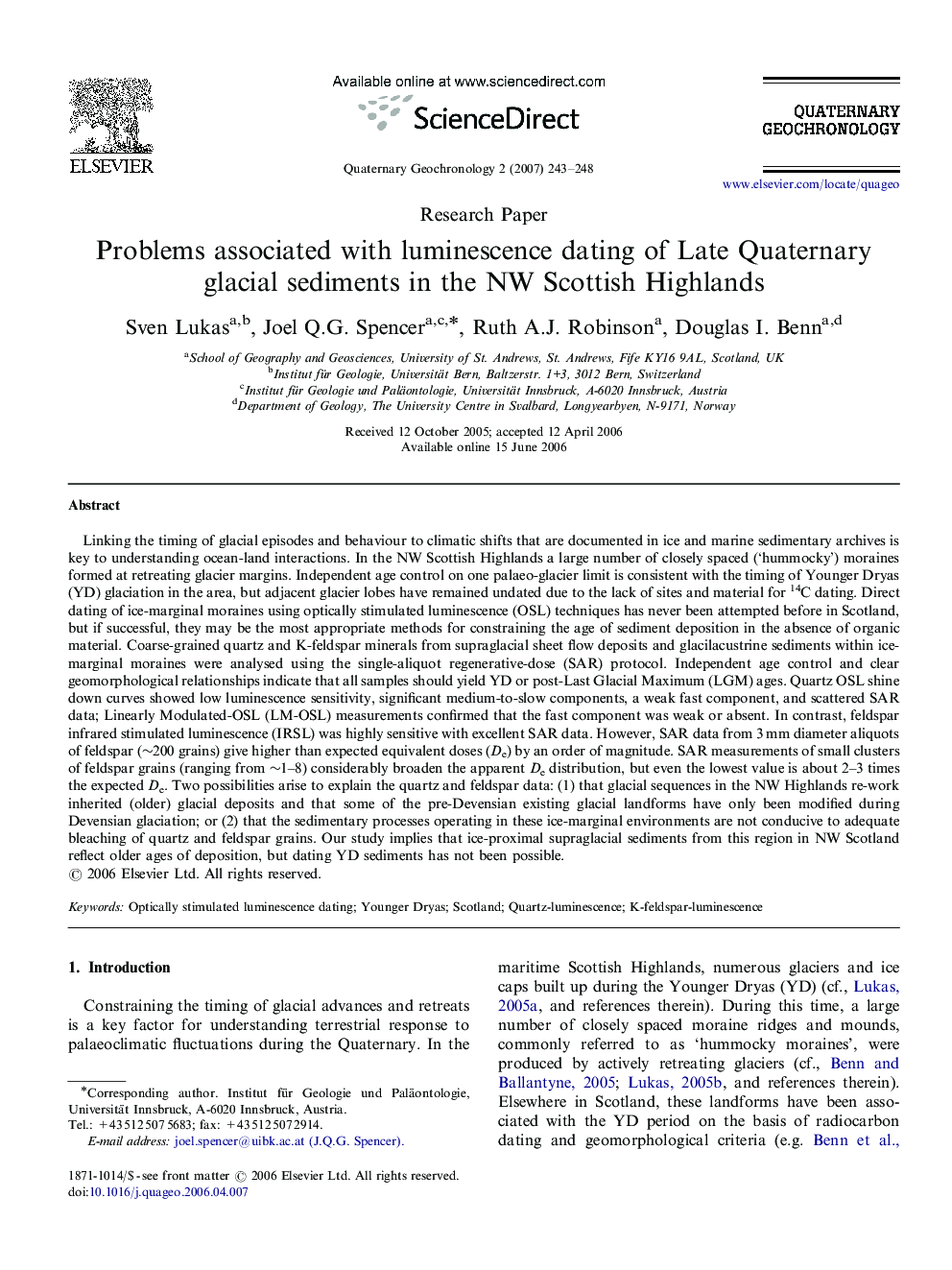| کد مقاله | کد نشریه | سال انتشار | مقاله انگلیسی | نسخه تمام متن |
|---|---|---|---|---|
| 4725410 | 1639873 | 2007 | 6 صفحه PDF | دانلود رایگان |

Linking the timing of glacial episodes and behaviour to climatic shifts that are documented in ice and marine sedimentary archives is key to understanding ocean-land interactions. In the NW Scottish Highlands a large number of closely spaced (‘hummocky’) moraines formed at retreating glacier margins. Independent age control on one palaeo-glacier limit is consistent with the timing of Younger Dryas (YD) glaciation in the area, but adjacent glacier lobes have remained undated due to the lack of sites and material for 14C dating. Direct dating of ice-marginal moraines using optically stimulated luminescence (OSL) techniques has never been attempted before in Scotland, but if successful, they may be the most appropriate methods for constraining the age of sediment deposition in the absence of organic material. Coarse-grained quartz and K-feldspar minerals from supraglacial sheet flow deposits and glacilacustrine sediments within ice-marginal moraines were analysed using the single-aliquot regenerative-dose (SAR) protocol. Independent age control and clear geomorphological relationships indicate that all samples should yield YD or post-Last Glacial Maximum (LGM) ages. Quartz OSL shine down curves showed low luminescence sensitivity, significant medium-to-slow components, a weak fast component, and scattered SAR data; Linearly Modulated-OSL (LM-OSL) measurements confirmed that the fast component was weak or absent. In contrast, feldspar infrared stimulated luminescence (IRSL) was highly sensitive with excellent SAR data. However, SAR data from 3 mm diameter aliquots of feldspar (∼200 grains) give higher than expected equivalent doses (De) by an order of magnitude. SAR measurements of small clusters of feldspar grains (ranging from ∼1–8) considerably broaden the apparent De distribution, but even the lowest value is about 2–3 times the expected De. Two possibilities arise to explain the quartz and feldspar data: (1) that glacial sequences in the NW Highlands re-work inherited (older) glacial deposits and that some of the pre-Devensian existing glacial landforms have only been modified during Devensian glaciation; or (2) that the sedimentary processes operating in these ice-marginal environments are not conducive to adequate bleaching of quartz and feldspar grains. Our study implies that ice-proximal supraglacial sediments from this region in NW Scotland reflect older ages of deposition, but dating YD sediments has not been possible.
Journal: Quaternary Geochronology - Volume 2, Issues 1–4, 2007, Pages 243–248